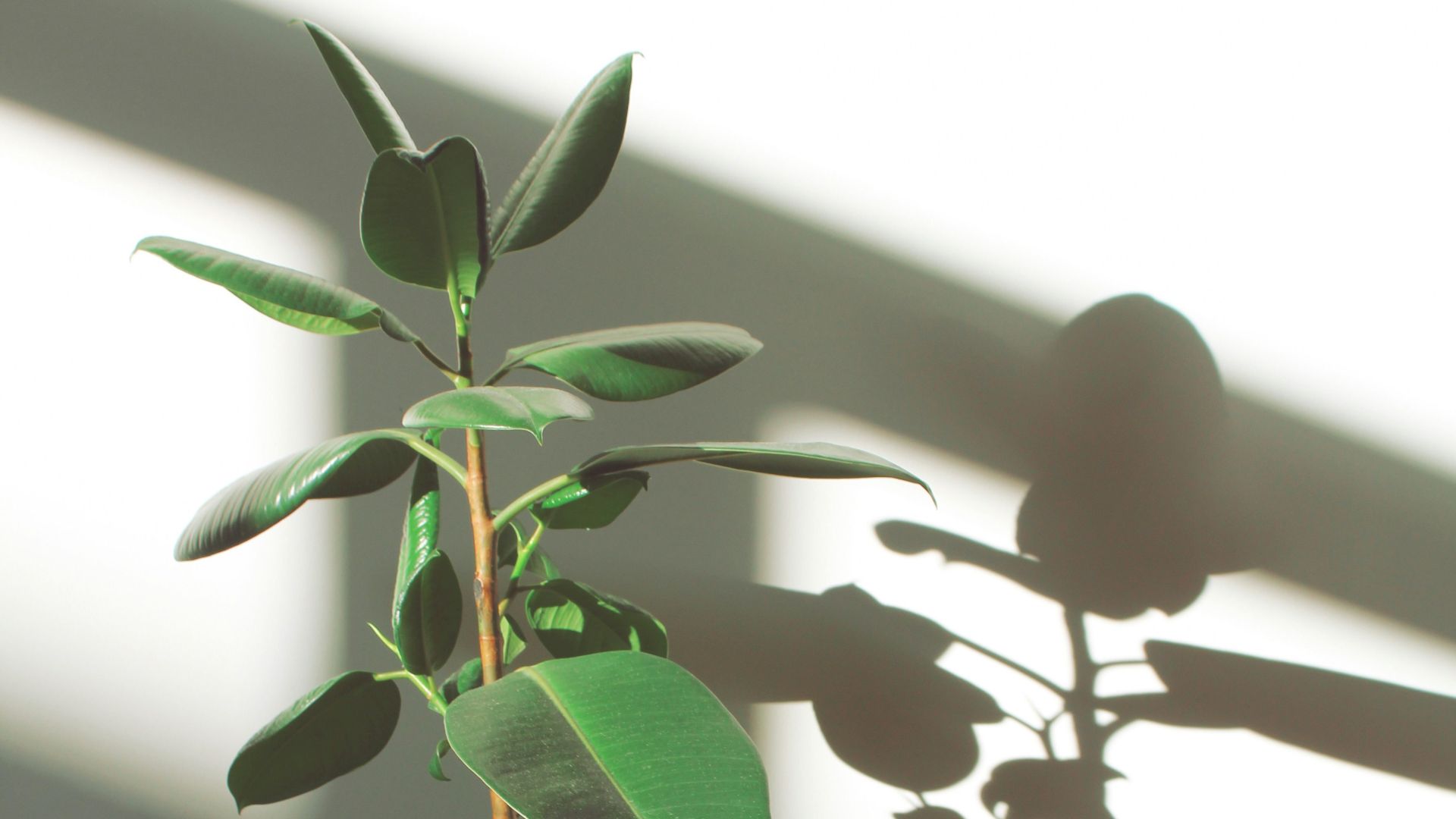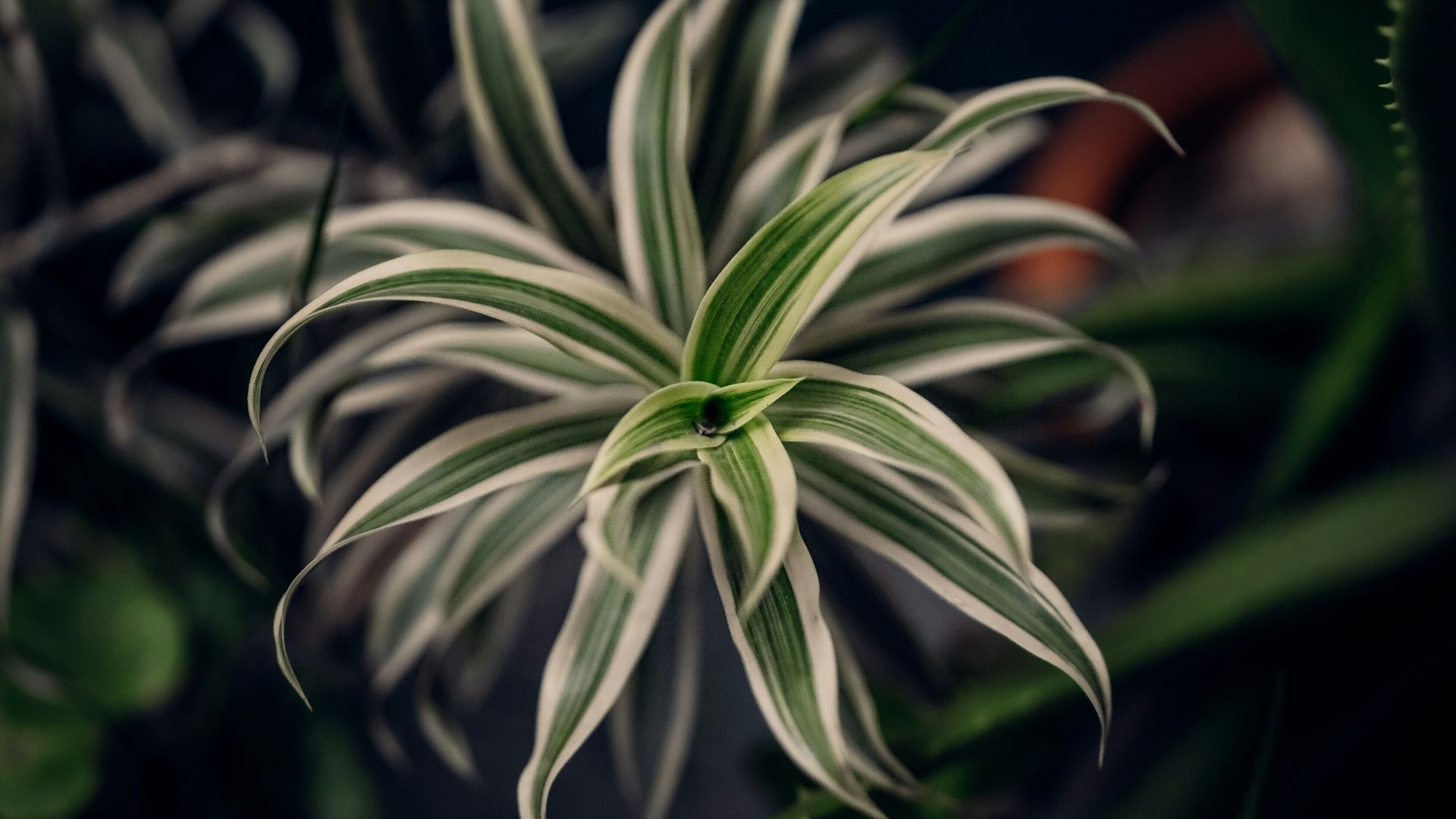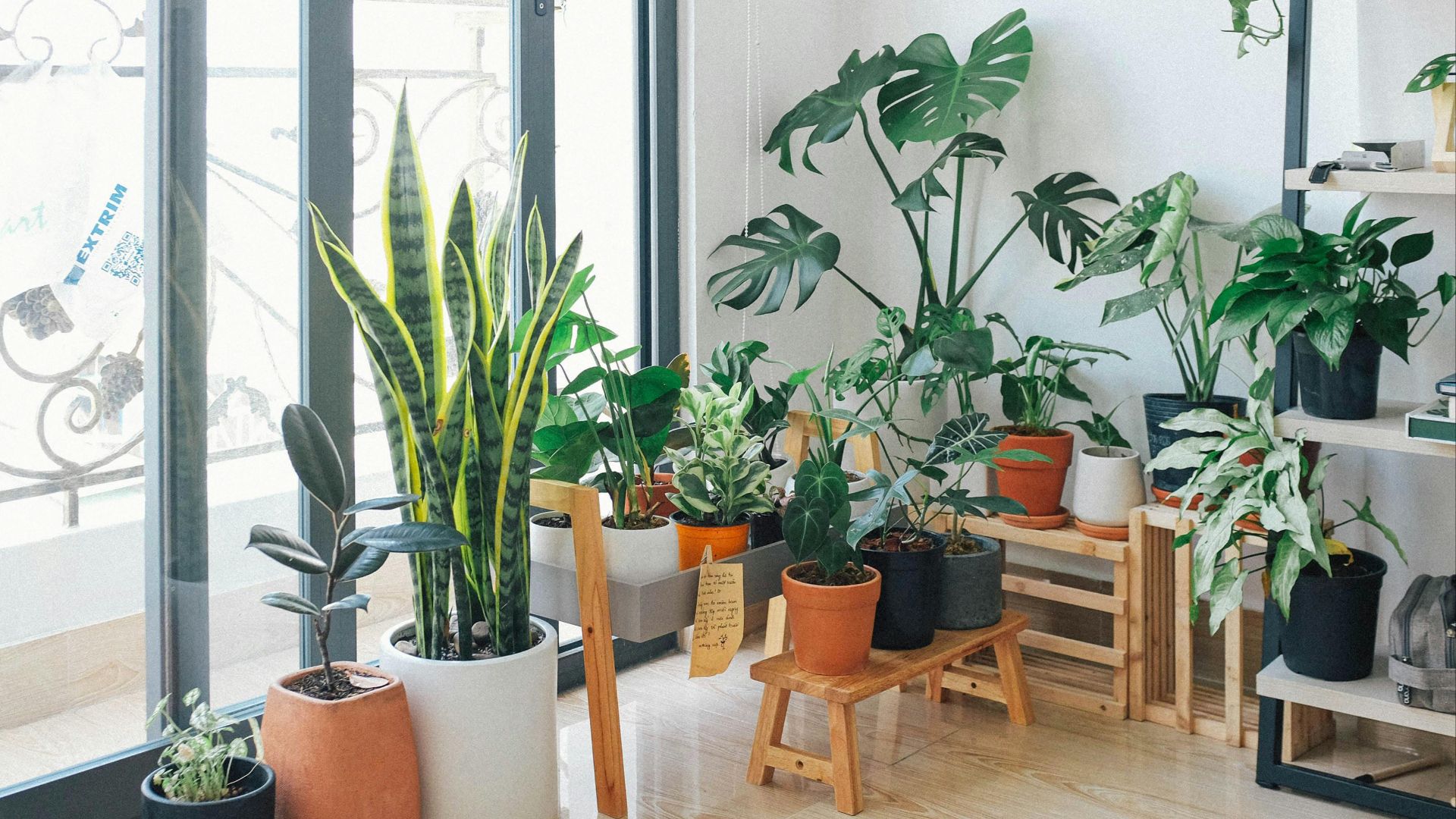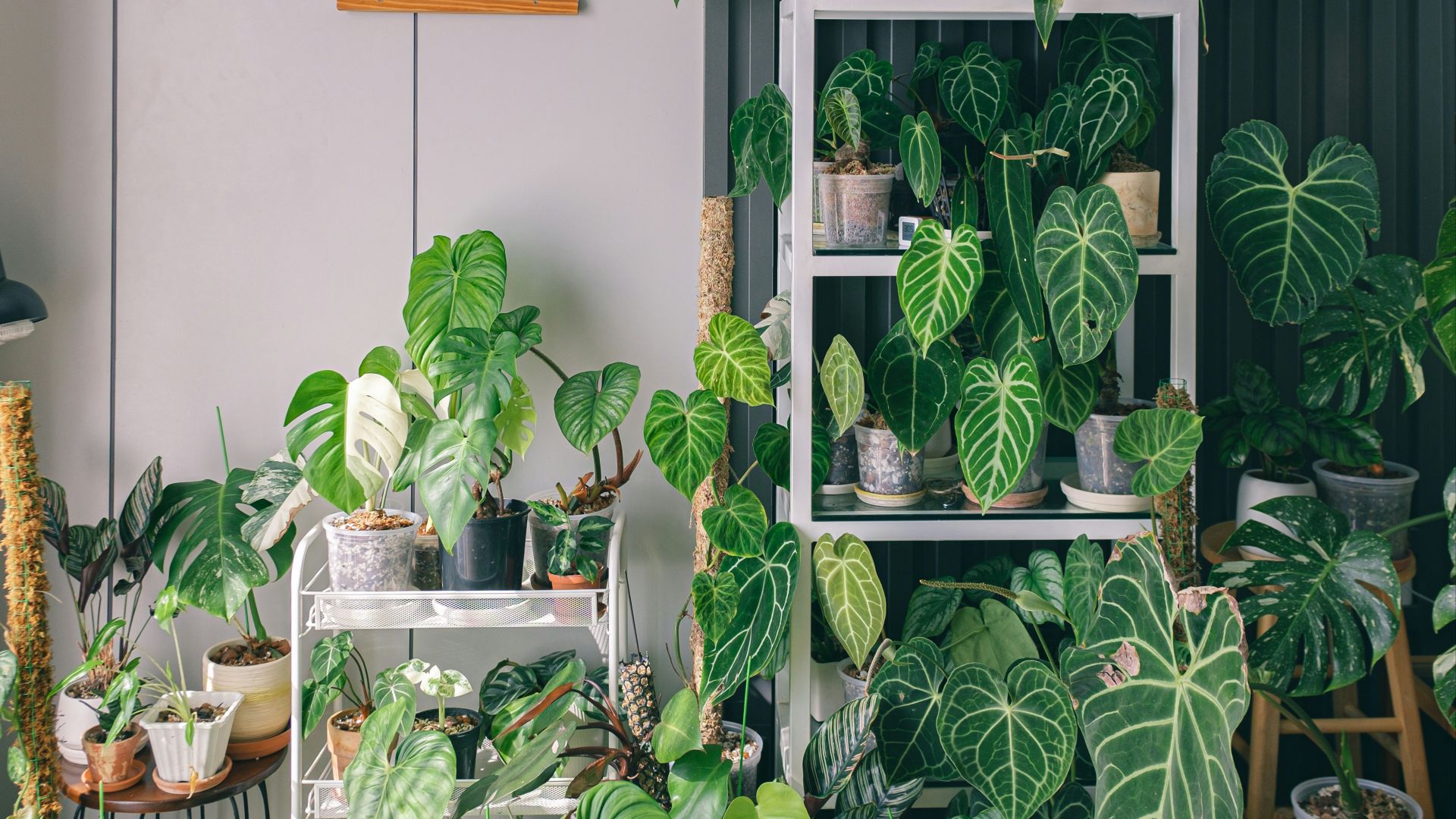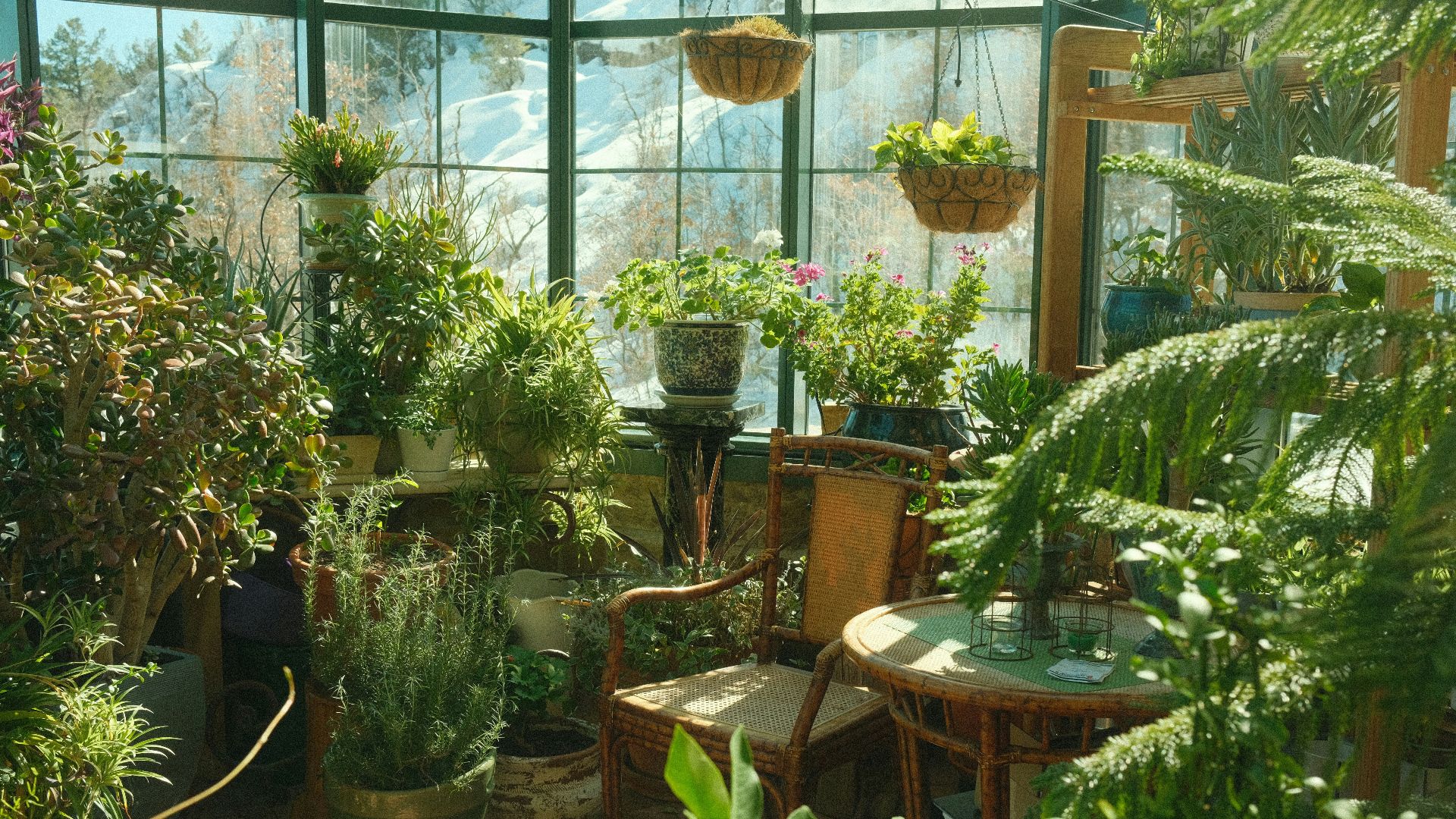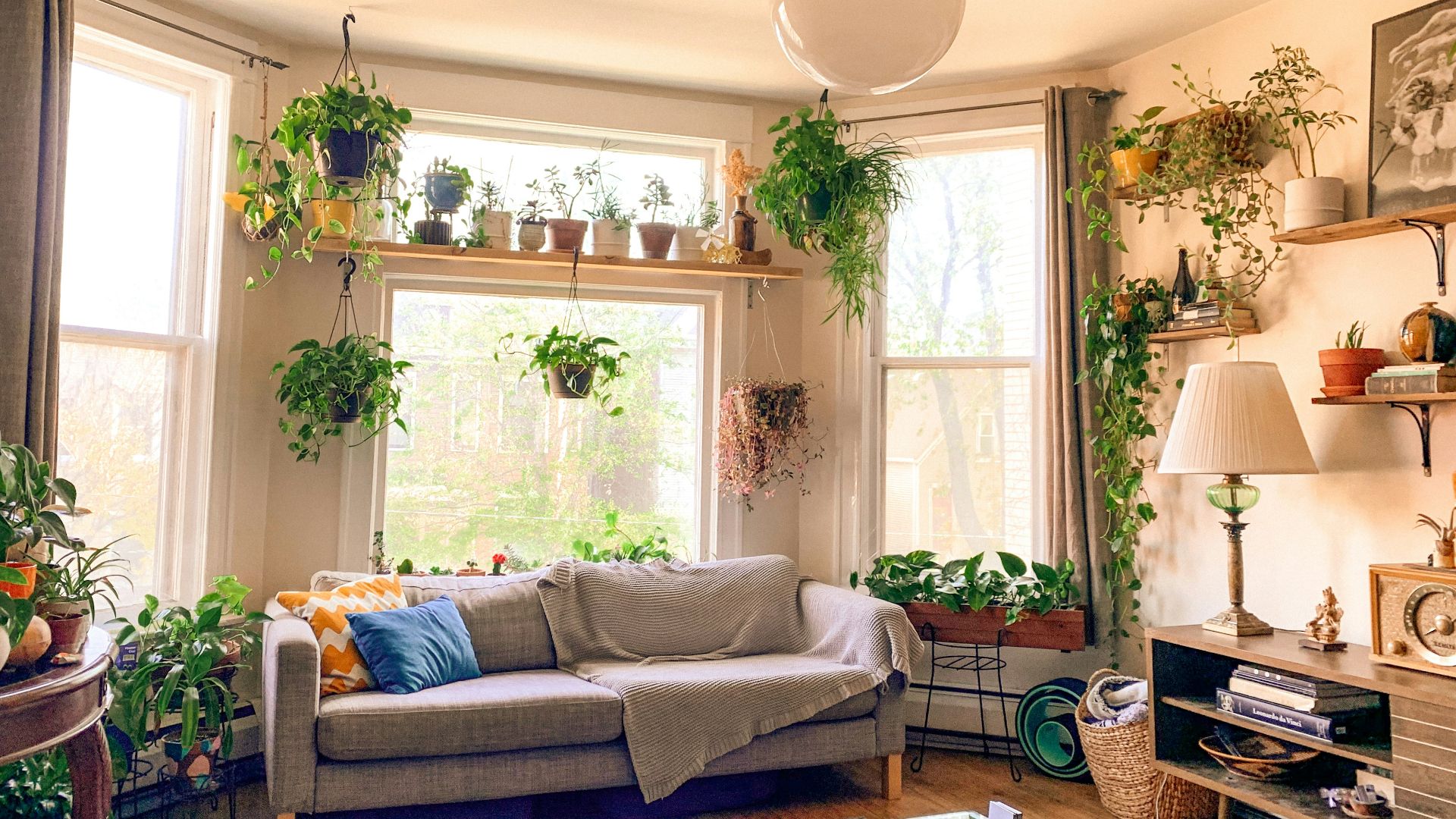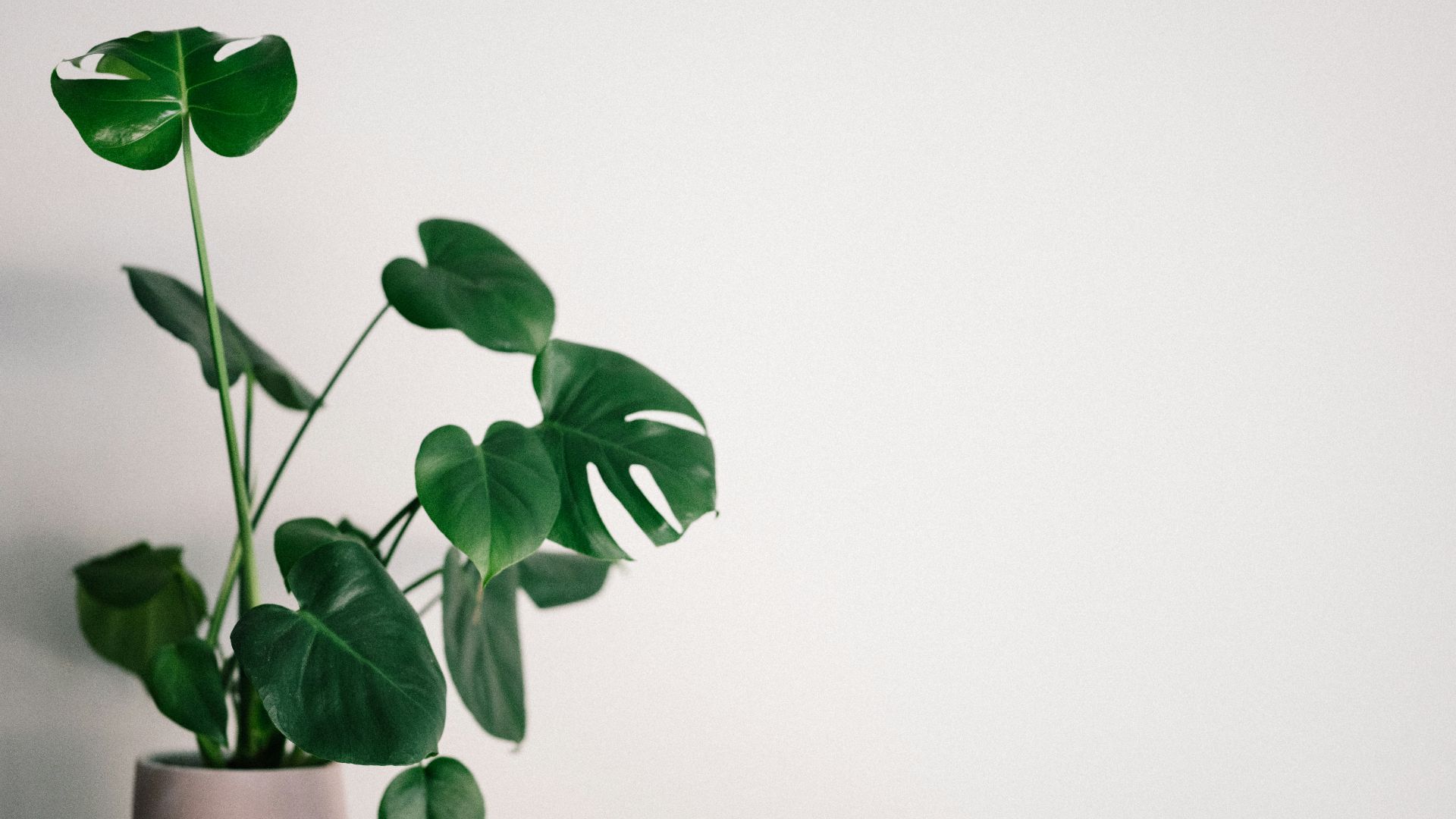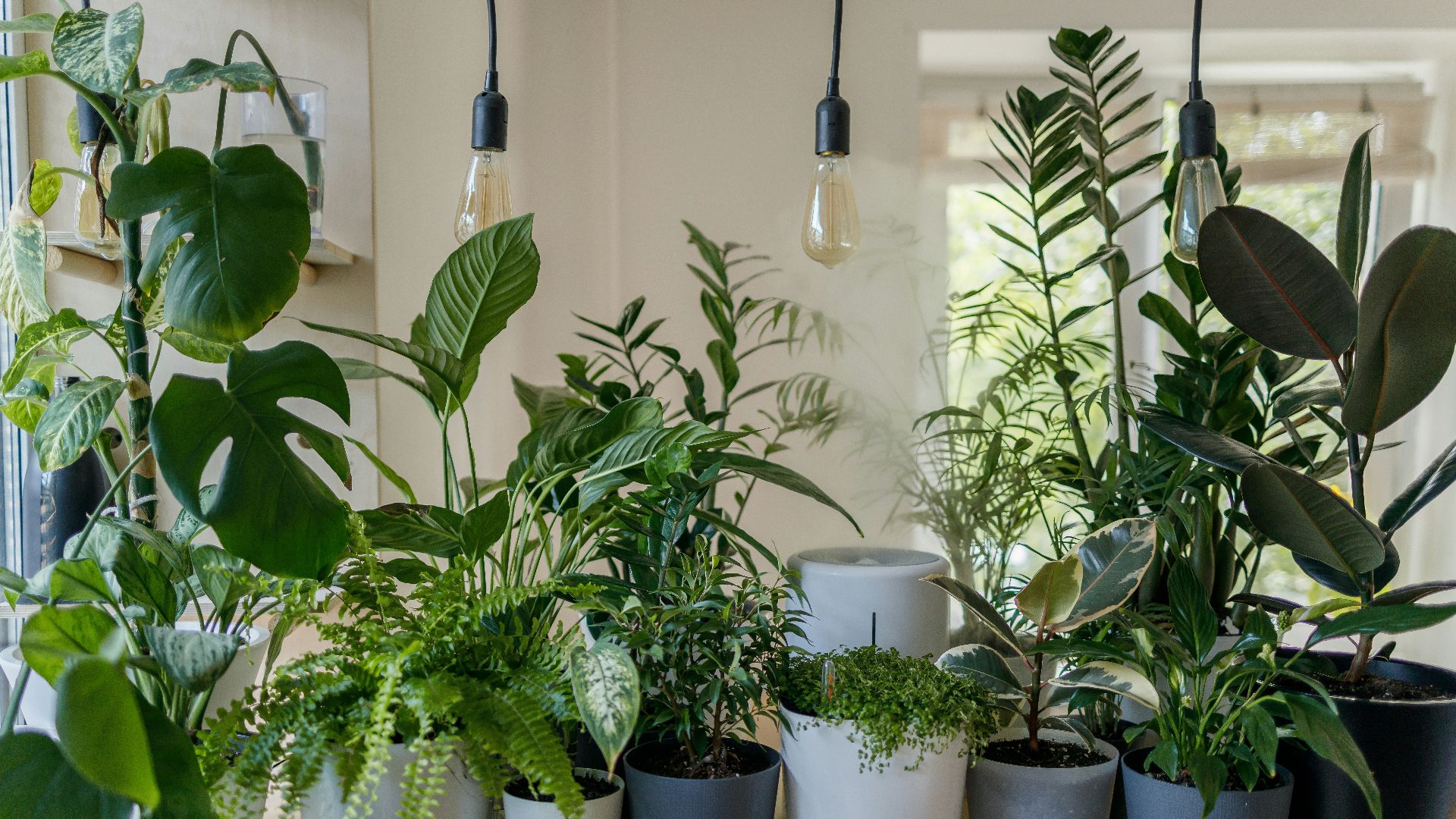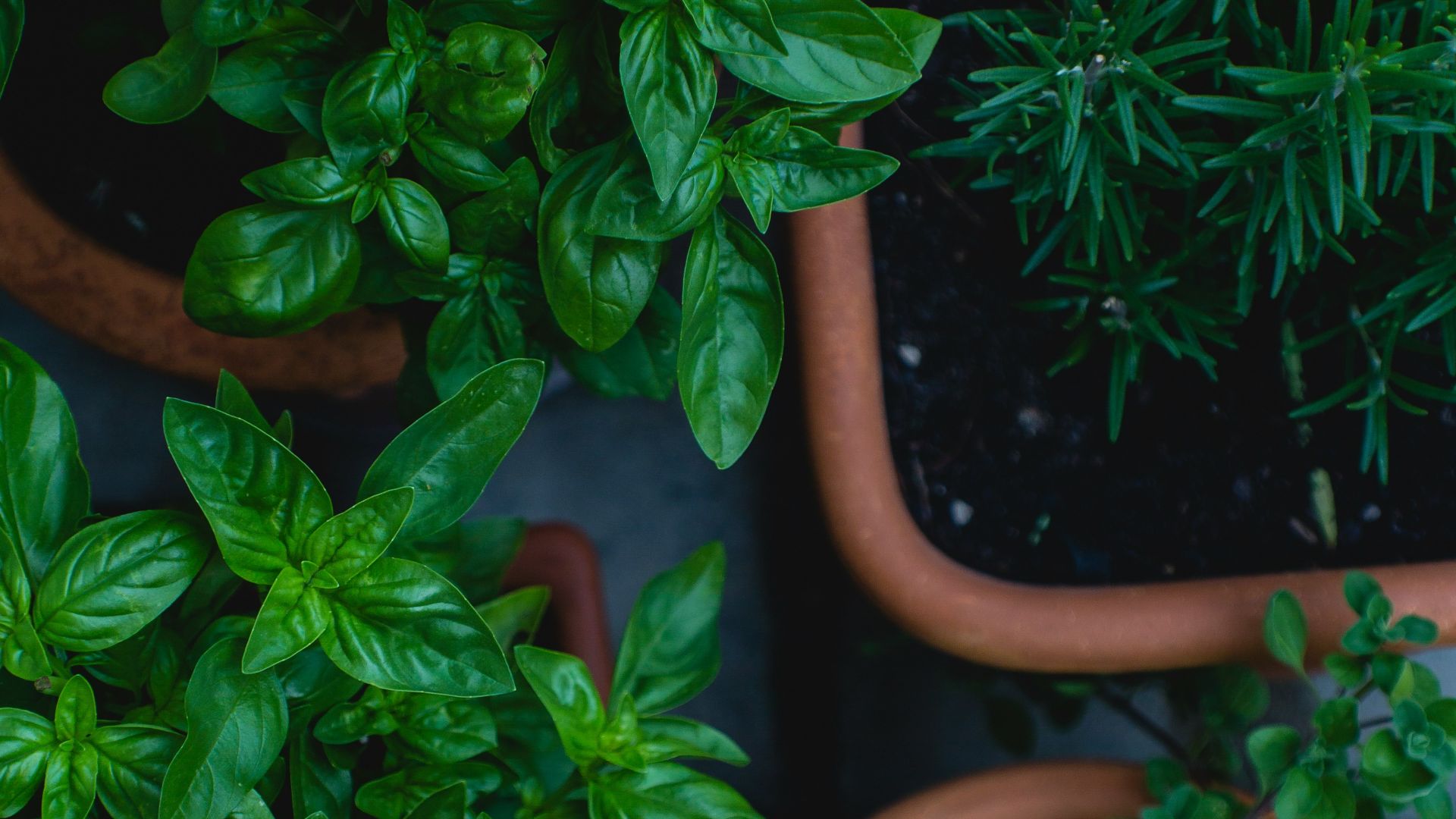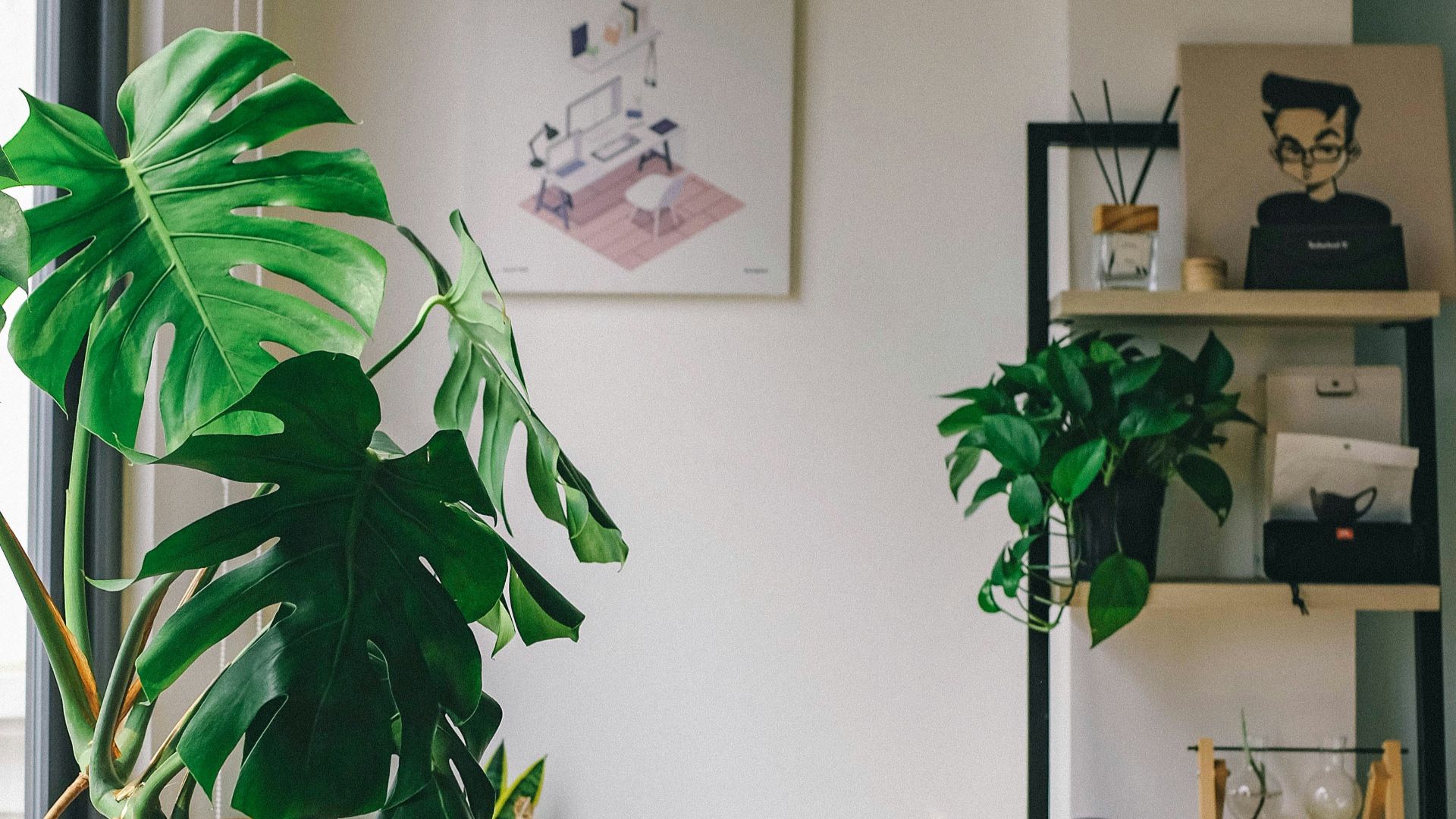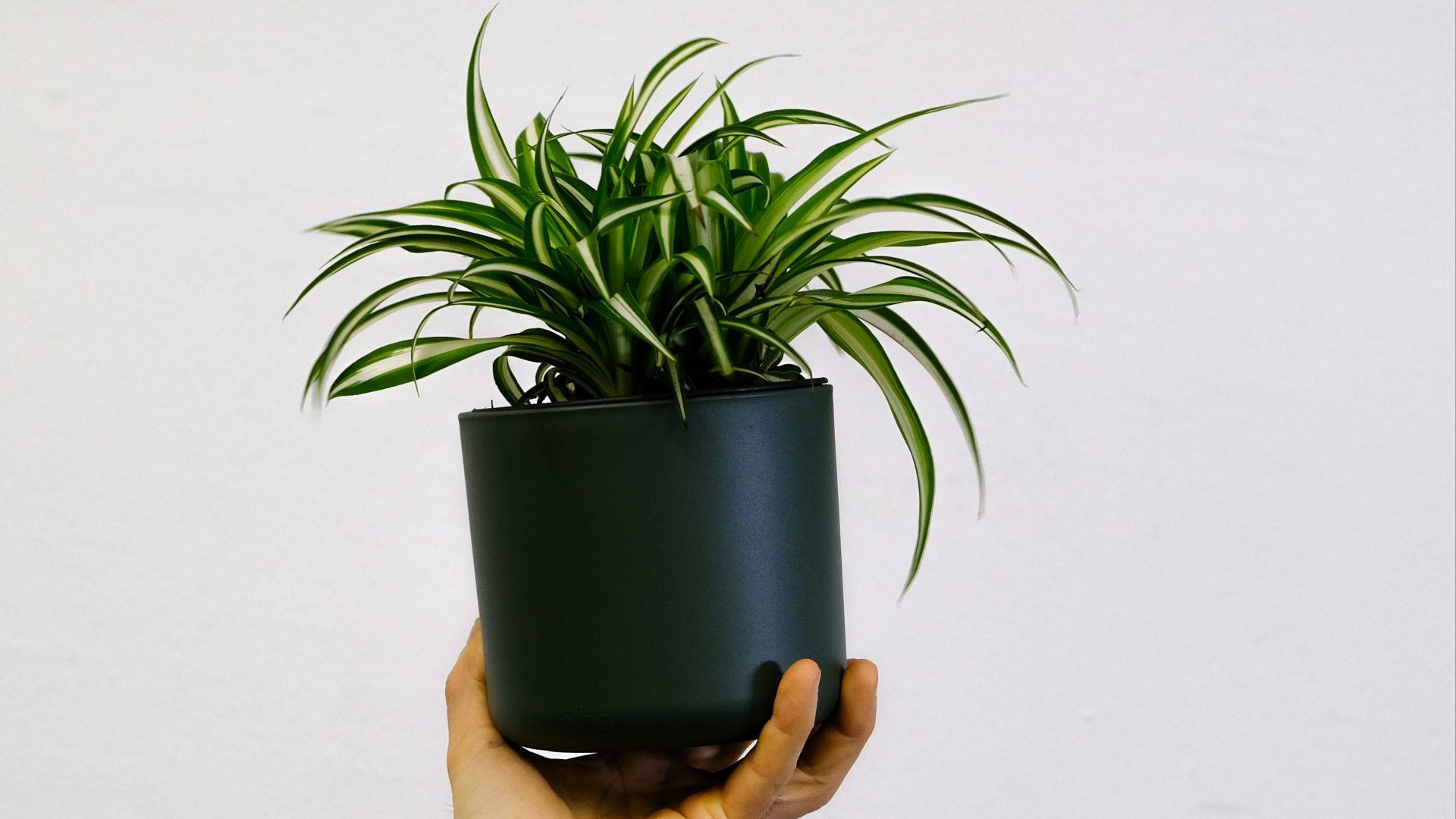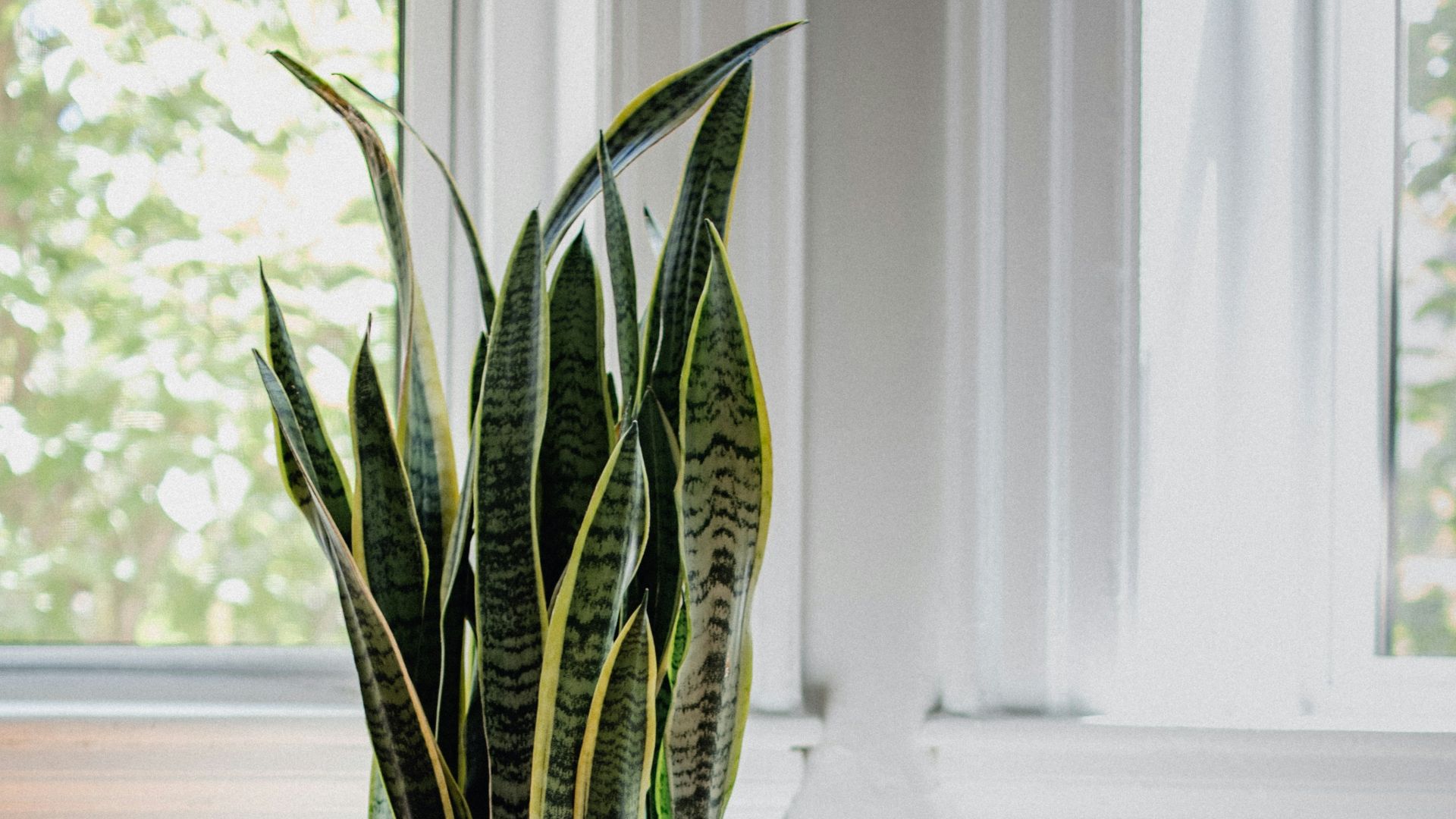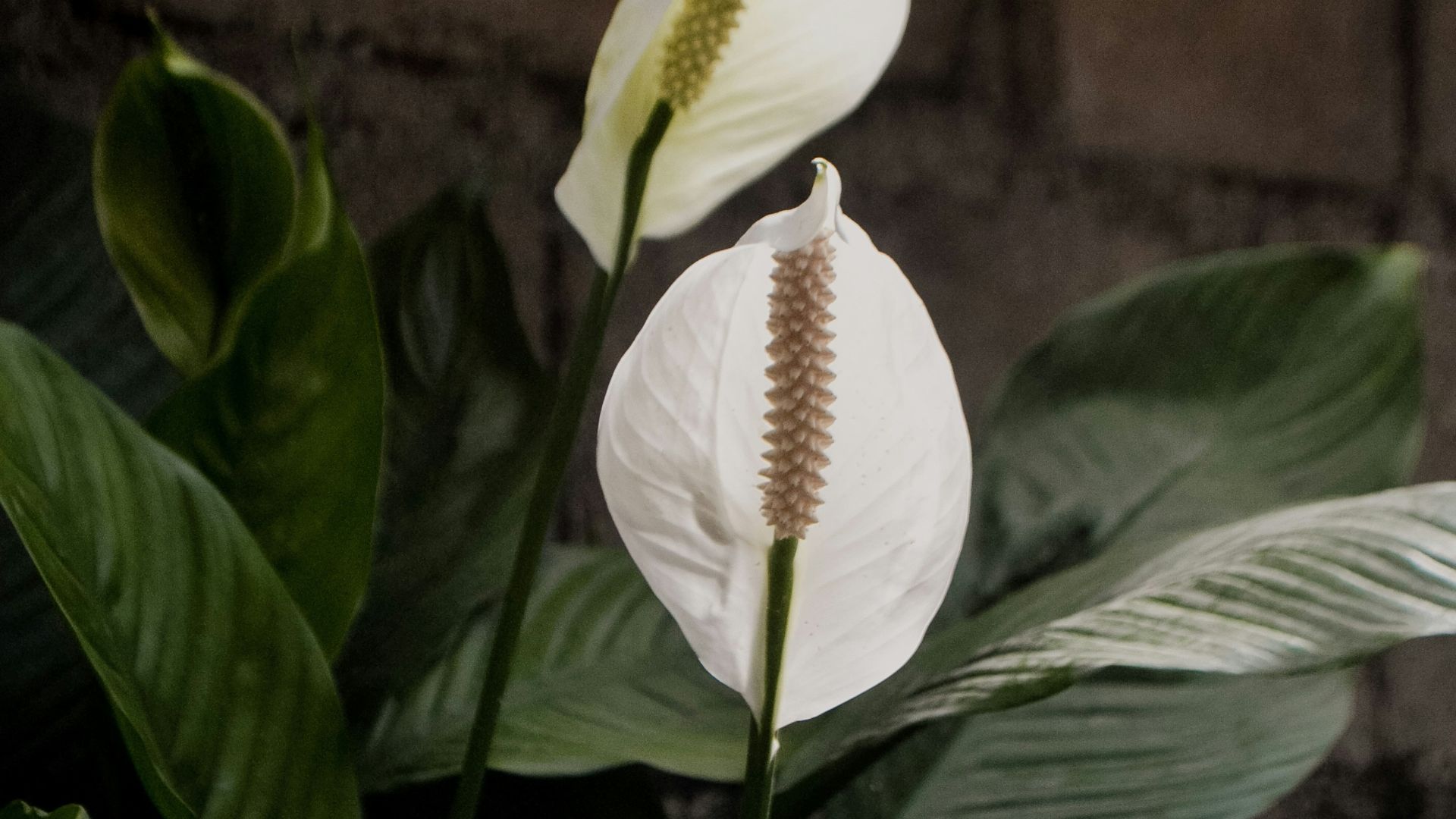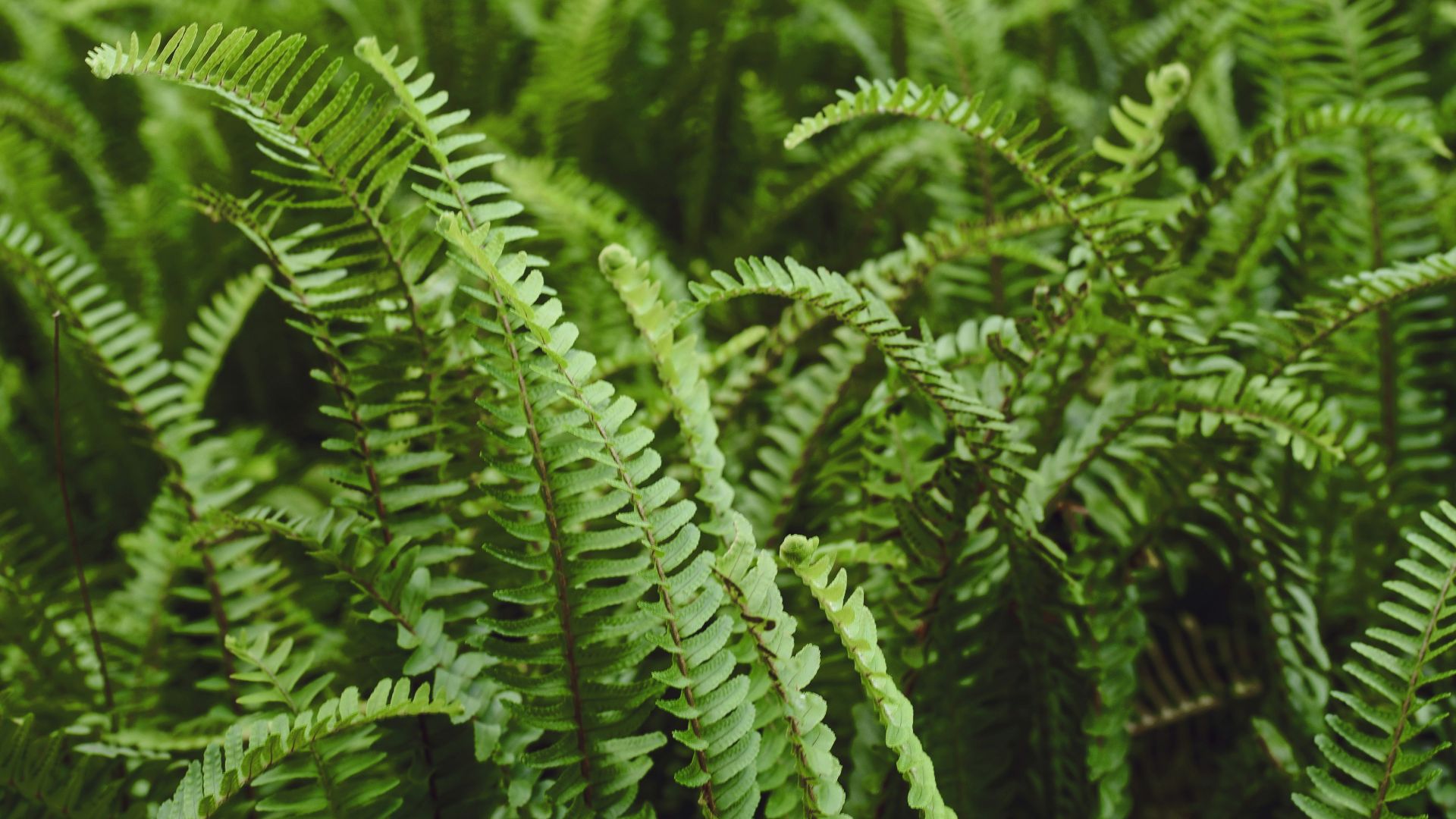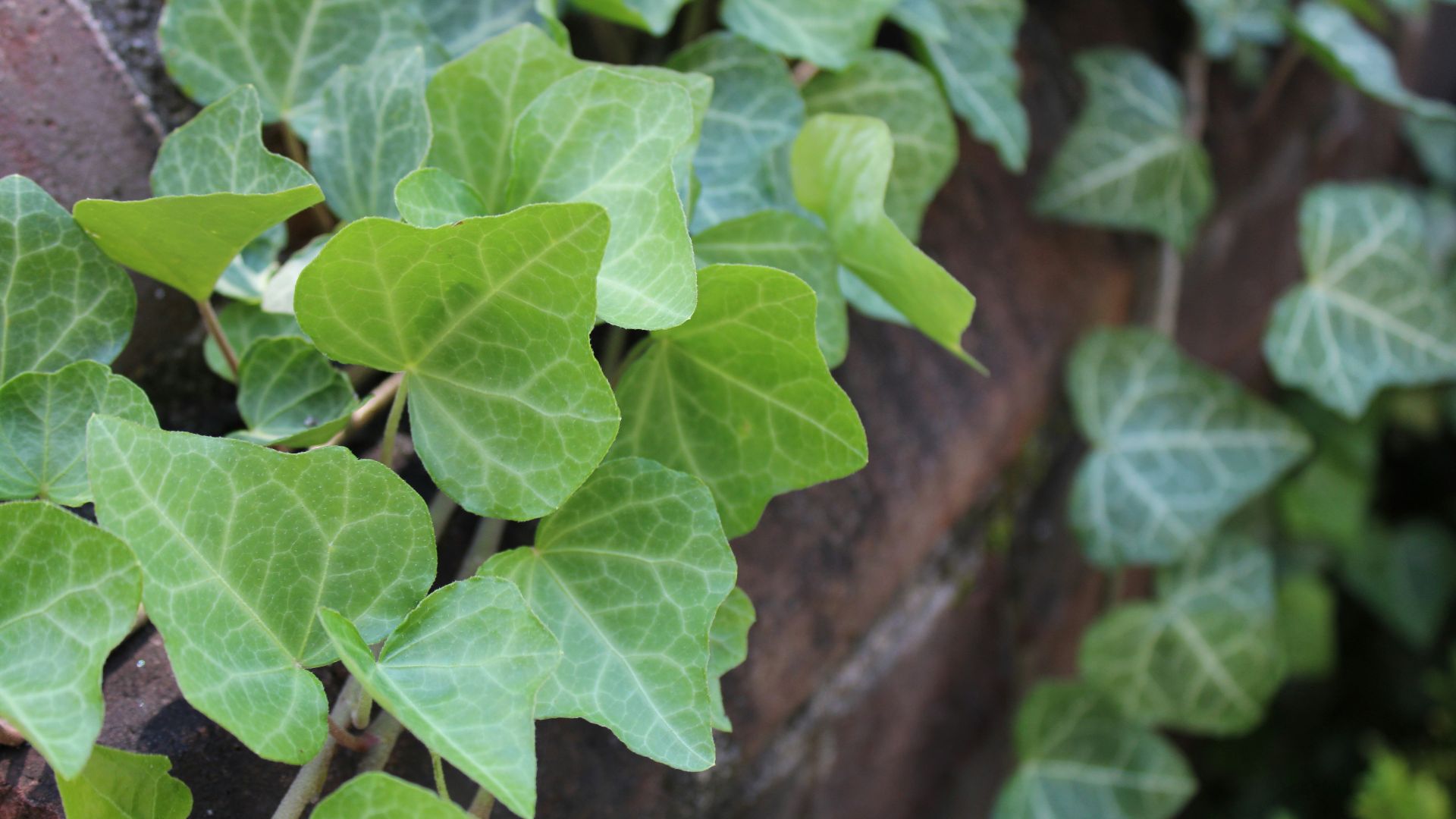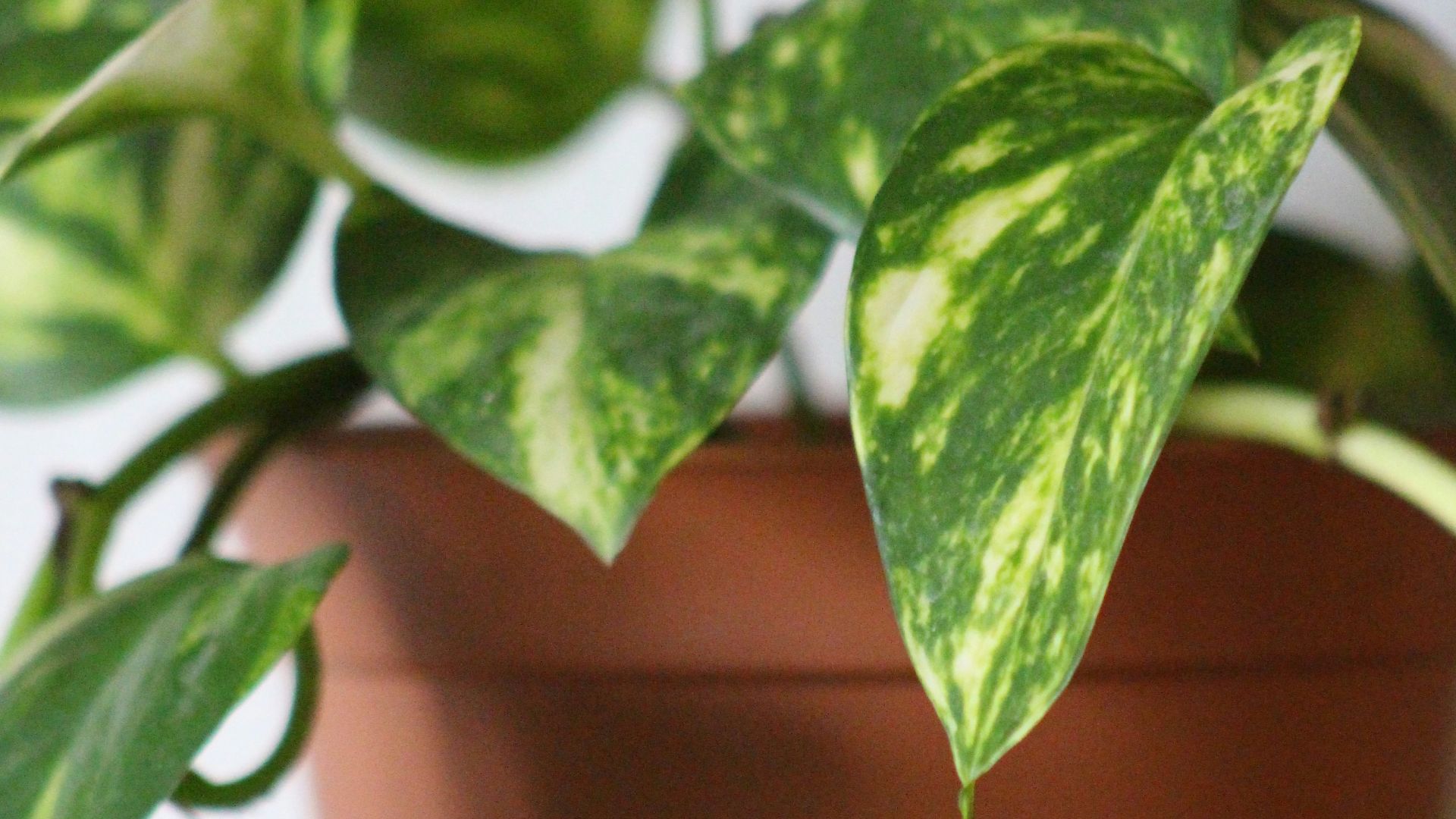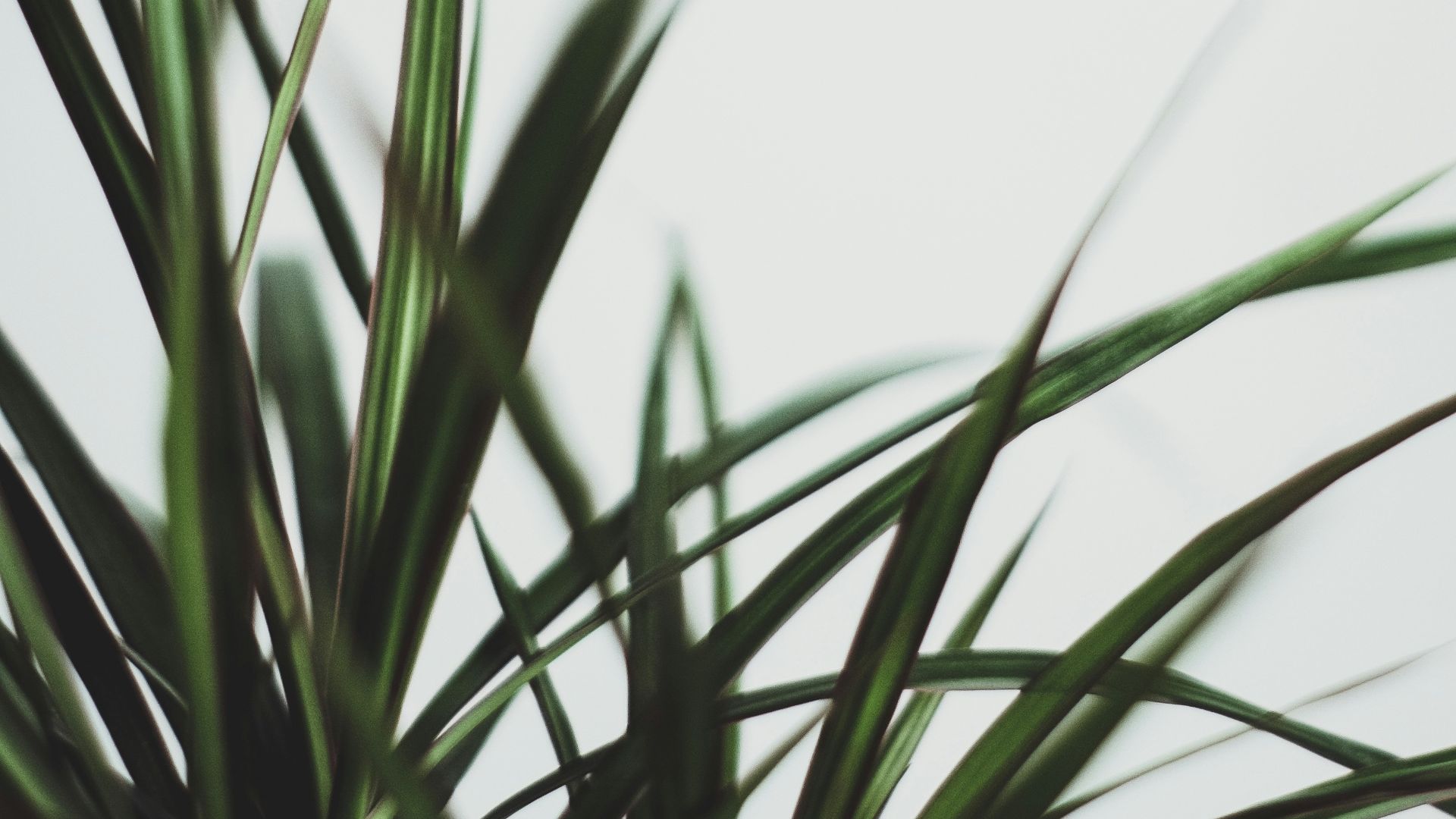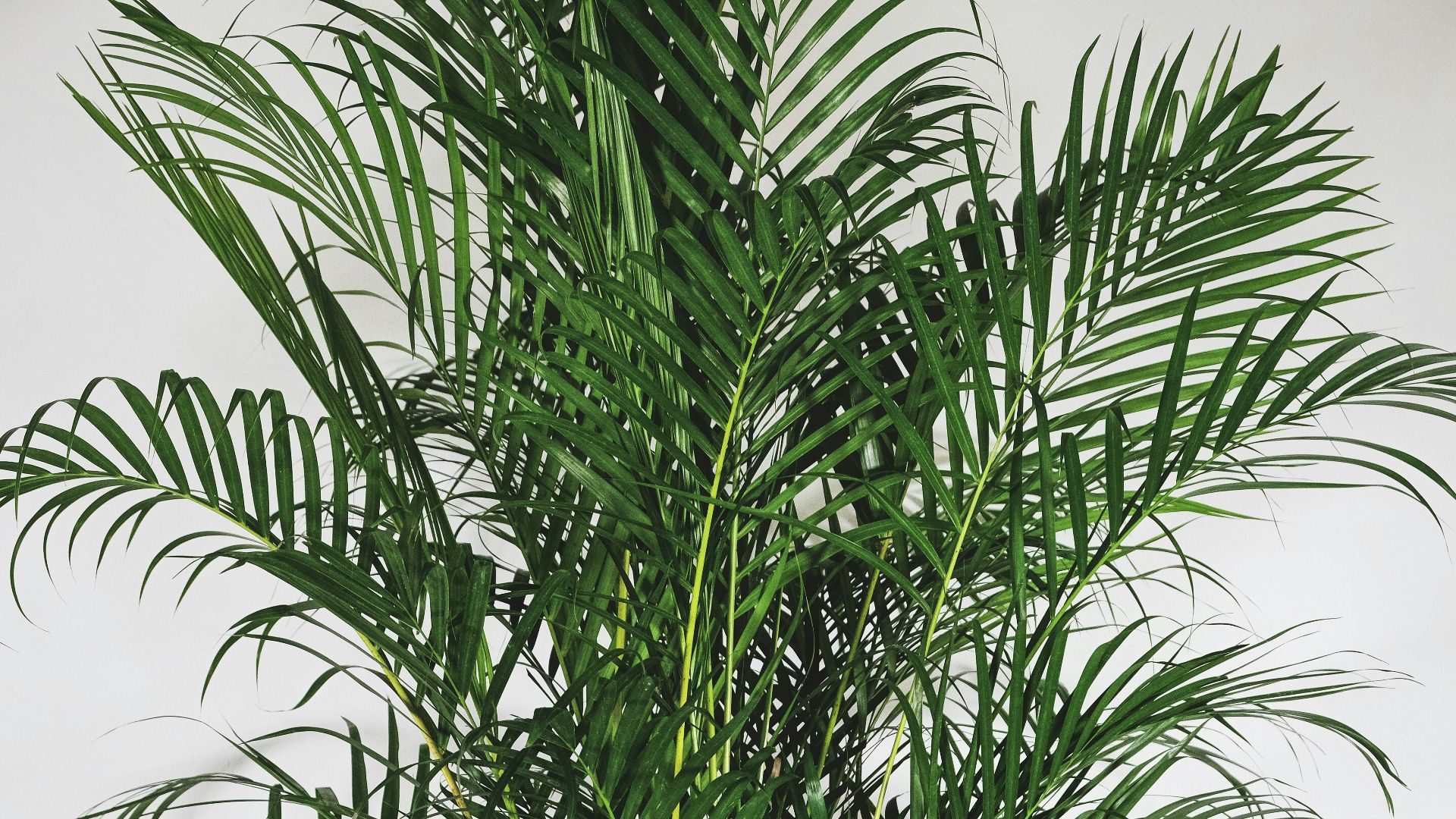Let's Just Clear The Air…
Look, we can all use a little bit more greenery in our lives, right? Especially for our city folk, who don’t see enough trees as it is, and spend a lot of their time breathing the same air as millions of other people. To create a gorgeous sanctuary, where your air is clean and your heart is at peace, consider getting some of these plants.
1. Improve Air Quality
Our familiar green friends have always helped us breathe, and house plants are no different. Through photosynthesis, plants remove carbon dioxide, release oxygen, and absorb pollutants like formaldehyde, benzene, and occasionally volatile organic compounds.
2. Boost Humidity
Thanks to a little process called transpiration, plants release moisture into the air through tiny pores in their leaves— leftovers from whatever they didn’t absorb from the soil. If you live in a particularly dry or cold area, having a couple of houseplants can really help to keep you from drying out.
3. Dampen Noise
Sound waves are absorbed by plants' leaves, stems, and branches, while scattering others. Having a big plant or two can significantly reduce noise in your home, which is helpful when living in a high-traffic area.
4. Reduce Stress
Plants provide a calming presence within the home, leading to lower physiological responses like blood pressure and heart rate. The act of gardening, or tending to plants, can also be a form of mindfulness, which also acts as a great stress and anxiety reducer.
5. Improve Mood
Alongside stress reduction, successfully caring for house plants can provide one with a sense of accomplishment. Not only that, but spending time in the same room as your plants can help decrease symptoms of depression while increasing feelings of relaxation.
6. Improve Focus
Through a combination of air purification and calming presence, studies show that plants have greatly improved concentration and productivity. As you breathe cleaner air and bring down those cortisol levels, you’ll notice how much better your focus is.
7. Connect To Nature
This one is pretty self-explanatory. For those of us who live in urban settings, having some regular greenery to care for helps us remember how good it feels to be in nature. Smell those good, earthy fragrances, watch your plant grow, and remember that we’re in a constant state of renewal.
8. For Cooking Or Skincare
Having a little herb garden or an aloe vera plant can go a long way in your home. Herbs will provide you with a bit of home-grown freshness in your cooking, while aloe is incredibly beneficial for skin and hair care.
9. To Challenge Yourself
If you didn’t grow up with people who cared for plants, and consistently believe you weren't born with a green thumb, getting a houseplant is a great way to challenge yourself. Taking on the small responsibility of plant care and being successful will not only make you feel accomplished but also potentially open doors to new interests or hobbies.
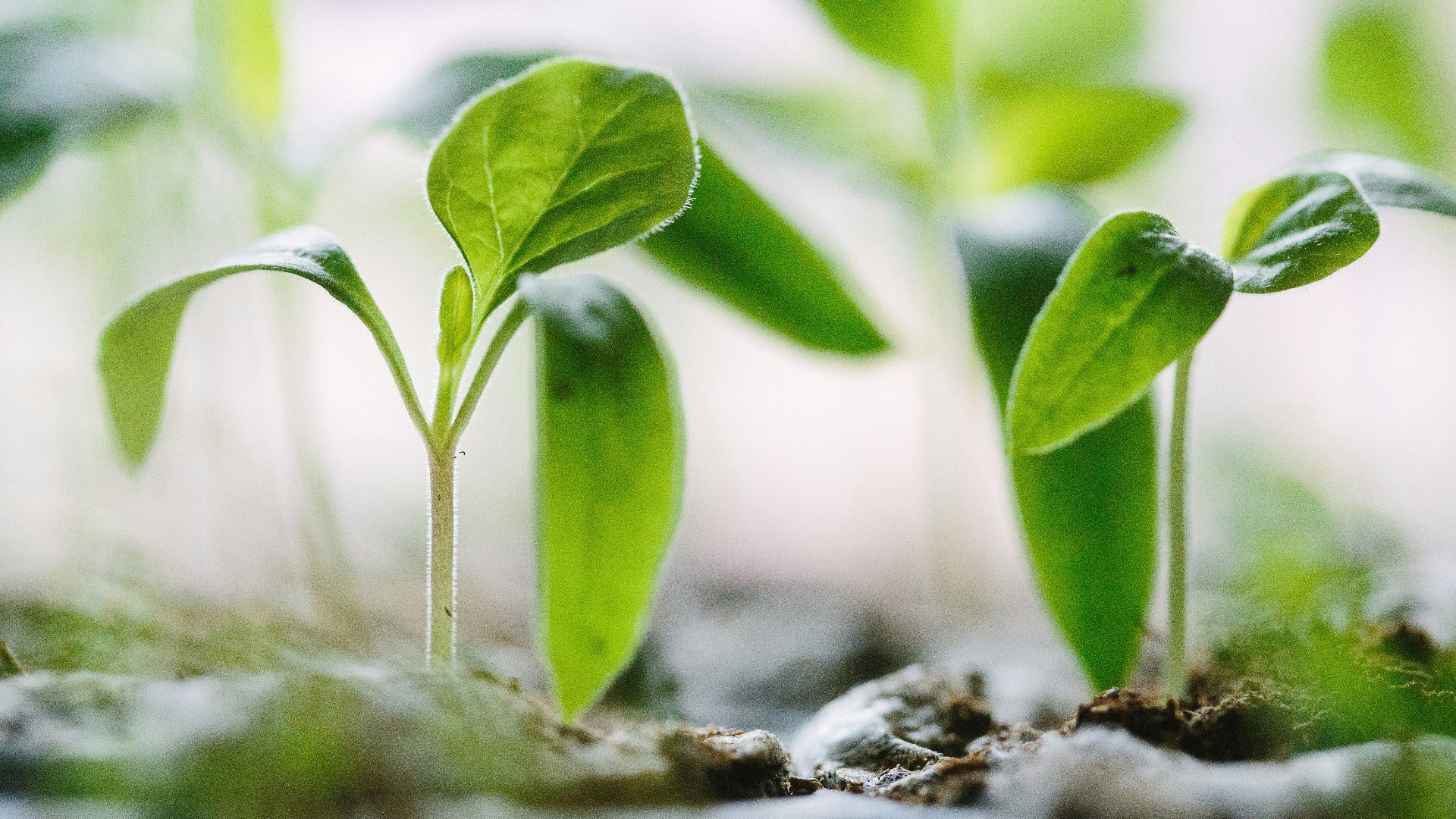 Francesco Gallarotti on Unsplash
Francesco Gallarotti on Unsplash
10. Cause They’re Pretty
Plants are just so darn pretty! Who doesn’t want to wake up every day to some gorgeous greenery? Regardless of any actual mental or physical reasons to get a house plant, the visual change alone is enough to make people interested.
1. Spider Plant
The Chlorophytum comosum is one of the most popular house plants to grow. They’re fast-growing, slender, easy to care for, and pet-friendly. Spider plants bloom all year, prefer partial or indirect sun exposure, and can take inconsistent watering schedules.
2. Snake Plant
The Dracaena trifasciata has gorgeous striped patterns splashed across light and dark green leaves. They tolerate low light but thrive in bright light, are incredibly tolerant of drought, and relatively hard to kill, making them a great beginner-friendly option.
3. Peace Lily
Not actually a part of the lily family, the spathiphyllum is loved for its delicate white petals and rich green shade. They do best with consistent moisture and humidity, indirect sunlight, and lightly watered soil. They are incredibly toxic to pets, however, so keep that in mind if you have furry friends.
4. Boston Fern
Also known as the sword fern, the Nephrolepis exaltata almost looks fluffy from afar. It can grow over 2 to 3 feet tall, making it an excellent option for a statement floor plant. Boston ferns like warm and humid conditions, filtered bright light, and a consistent watering schedule.
5. English Ivy
Considered invasive in many areas, the Hedera helix is a fast-growing plant that can climb up to 80 feet high if left unattended. It is quite toxic to animals and people, but it is a gorgeous option if you have a pet and a child-free home. Ivy prefers partial to full shade and slightly dry soil.
6. Rubber Plant
The Ficus elastica gets its name from its soft, yet glossy leaves. It has an impressive growth rate, reaching over 100 feet tall in its natural habitat. They can be a little finicky to grow, requiring lots of indirect light, moist soil, and high humidity, but we promise that they’re worth it.
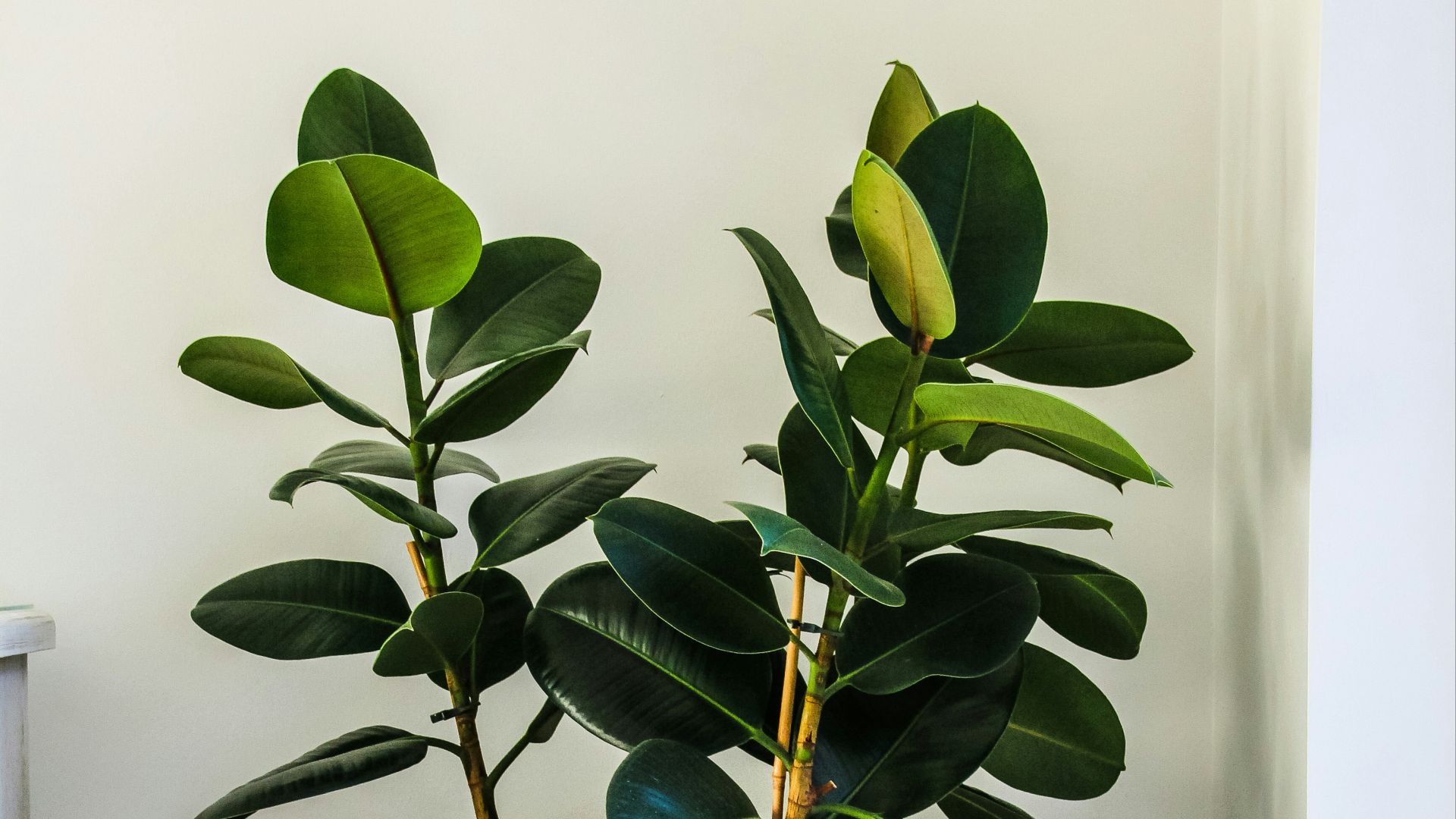 Denley Photography on Unsplash
Denley Photography on Unsplash
7. Golden Pothos
The Epipremnum aureum is one of the easiest house plants to care for, and is often cited as an excellent choice for beginners. It’s fast-growing and adaptable, growing in low-light areas, indirect light, or shade. They do well in regular potting soil and only need to be watered every week or so.
8. Bamboo Palm
The Chamaedorea seifrizii is your mini version of the larger bamboo species, and a gorgeous plant to boot. They require partial shade, rich, moist soil to thrive, and a decent amount of humidity.
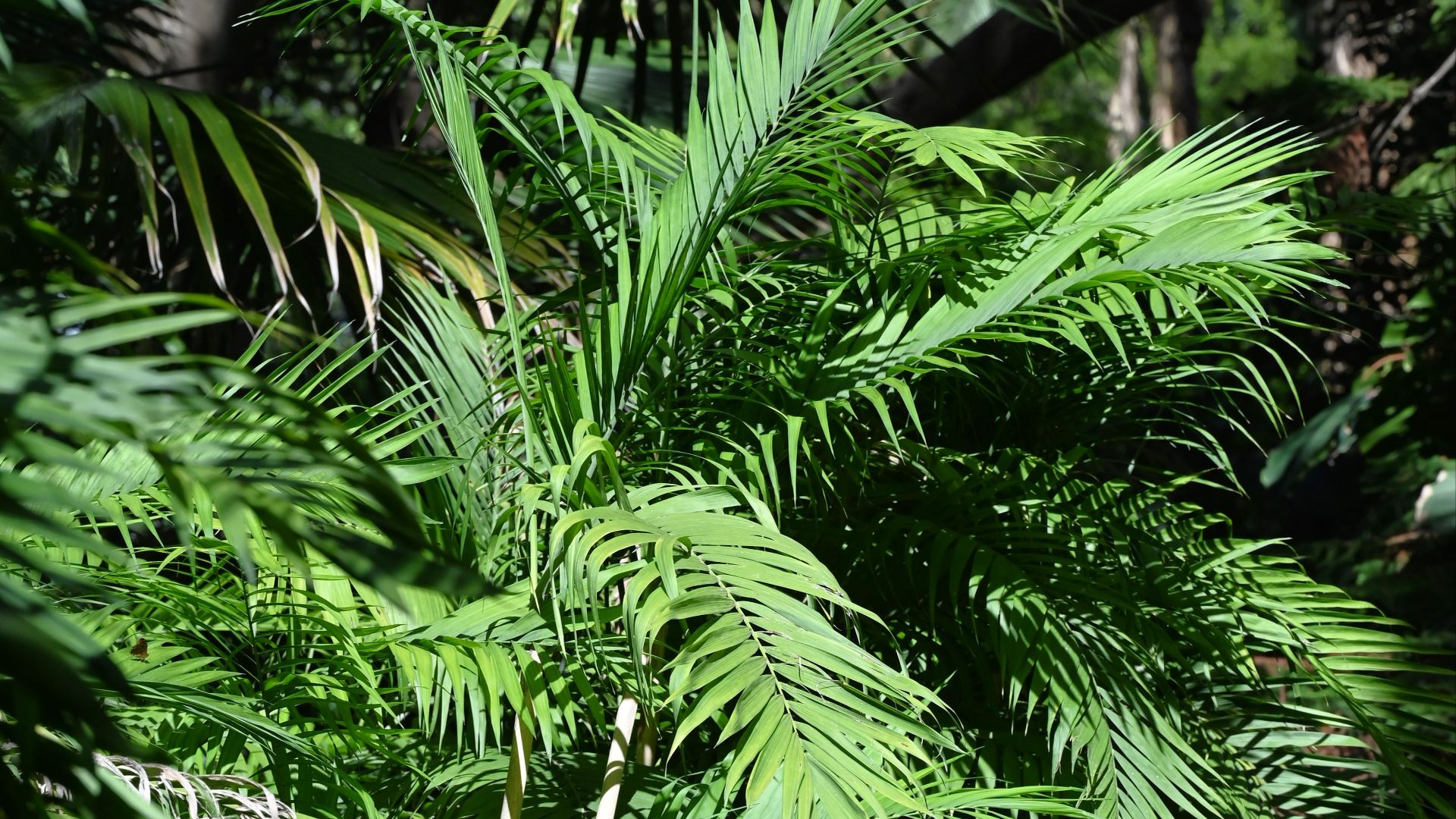 Krzysztof Ziarnek, Kenraiz on Wikimedia
Krzysztof Ziarnek, Kenraiz on Wikimedia
9. Dracaena
These spiky plants are popular among houseplant lovers, and there are so many to choose from. They often have spear or grass-shaped leaves and thick stems, and they thrive in bright, indirect light. Dracaenas love a semi-regular watering schedule, a bit of humidity, and slightly acidic potting soil.
10. Areca Palm
The Dypsis lutescens are tall, narrow plants that look very similar to bamboo. They can get up to about 8 feet indoors, growing about half a foot per year. They thrive in areas with bright, full, or filtered sunlight, semi-regular watering, and warmer temperatures.


